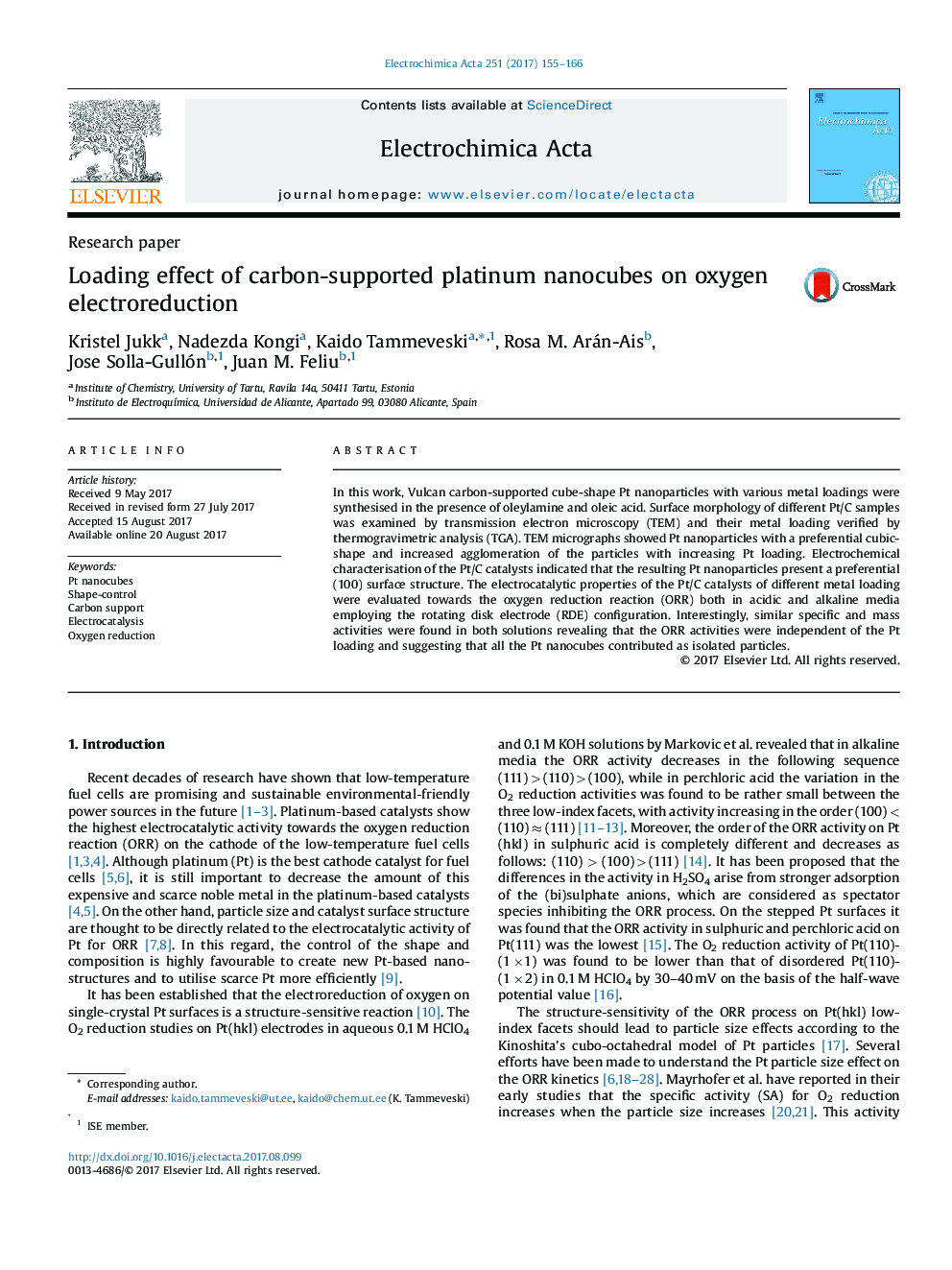| Article ID | Journal | Published Year | Pages | File Type |
|---|---|---|---|---|
| 6469886 | Electrochimica Acta | 2017 | 12 Pages |
â¢Cubic Pt nanoparticles are synthesised in the presence of oleylamine and oleic acid.â¢Vulcan carbon is used as a support for cubic Pt nanoparticles with various loading.â¢Pt/C catalysts revealed a high ORR activity in both acid and alkaline solutions.â¢Pt/C catalysts showed similar specific and mass activity independently of Pt loading.â¢Important methodological aspects regarding Pt/C catalyst testing are highlighted
In this work, Vulcan carbon-supported cube-shape Pt nanoparticles with various metal loadings were synthesised in the presence of oleylamine and oleic acid. Surface morphology of different Pt/C samples was examined by transmission electron microscopy (TEM) and their metal loading verified by thermogravimetric analysis (TGA). TEM micrographs showed Pt nanoparticles with a preferential cubic-shape and increased agglomeration of the particles with increasing Pt loading. Electrochemical characterisation of the Pt/C catalysts indicated that the resulting Pt nanoparticles present a preferential (100) surface structure. The electrocatalytic properties of the Pt/C catalysts of different metal loading were evaluated towards the oxygen reduction reaction (ORR) both in acidic and alkaline media employing the rotating disk electrode (RDE) configuration. Interestingly, similar specific and mass activities were found in both solutions revealing that the ORR activities were independent of the Pt loading and suggesting that all the Pt nanocubes contributed as isolated particles.
Graphical abstractDownload high-res image (111KB)Download full-size image
